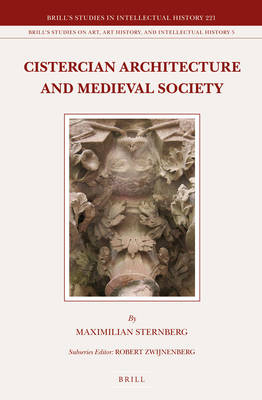
- Afhalen na 1 uur in een winkel met voorraad
- Gratis thuislevering in België vanaf € 30
- Ruim aanbod met 7 miljoen producten
- Afhalen na 1 uur in een winkel met voorraad
- Gratis thuislevering in België vanaf € 30
- Ruim aanbod met 7 miljoen producten
Zoeken
Omschrijving
In Cistercian Architecture and Medieval Society Maximilian Sternberg offers an account of the social functions of the built environment in medieval monasticism. Few medieval monuments hold so privileged a place in the modern imagination as Cistercian abbeys, yet Sternberg suggests, it is precisely our own, peculiarly modern fascination with the idea of 'Cistercian aesthetics' that has hindered a full view of the complex social meanings of their architecture. This book draws attention instead to the practical and symbolic means by which architecture helped the Cistercians to negotiate the dense web of relations that, in actuality, bound them to other spheres of medieval society. It explores the permeability of monastic boundaries, and considers their effectiveness in reconciling a simultaneous need for interaction and distance between monastic communities and these other social spheres.
Specificaties
Betrokkenen
- Auteur(s):
- Uitgeverij:
Inhoud
- Aantal bladzijden:
- 316
- Taal:
- Engels
- Reeks:
- Reeksnummer:
- nr. 221
Eigenschappen
- Productcode (EAN):
- 9789004251809
- Verschijningsdatum:
- 15/08/2013
- Uitvoering:
- Hardcover
- Formaat:
- Genaaid
- Afmetingen:
- 160 mm x 241 mm
- Gewicht:
- 612 g

Alleen bij Standaard Boekhandel
+ 503 punten op je klantenkaart van Standaard Boekhandel
Beoordelingen
We publiceren alleen reviews die voldoen aan de voorwaarden voor reviews. Bekijk onze voorwaarden voor reviews.








